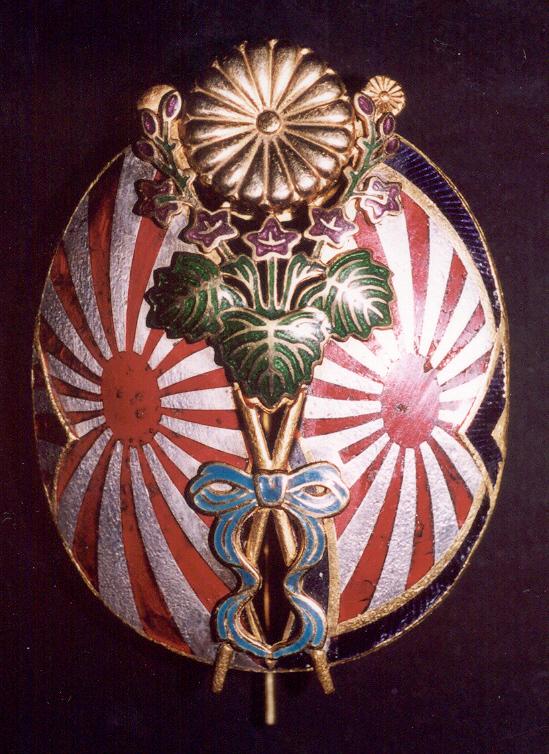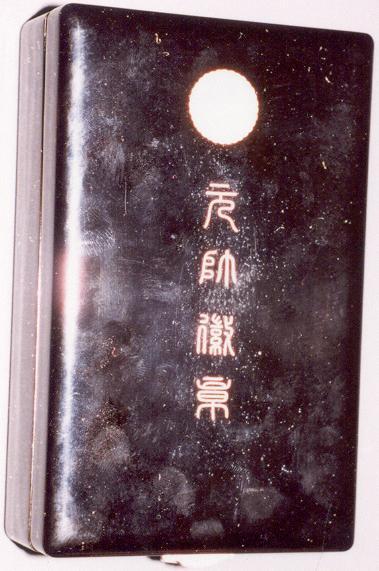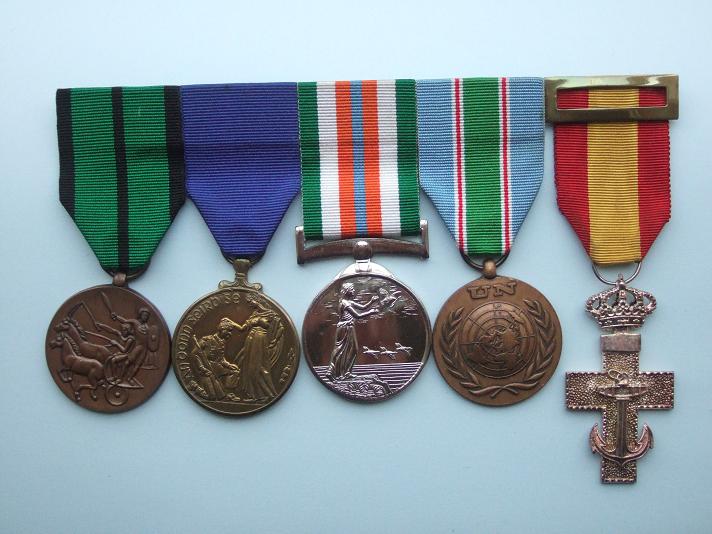-
Posts
2,123 -
Joined
-
Last visited
-
Days Won
3
Content Type
Profiles
Forums
Blogs
Gallery
Events
Store
Posts posted by Paul L Murphy
-
-
Thank you Noir 7
What do you guys mean with "unofficial"? Who made them? Are these fakes?
These were made by the same manufacturers as the official clasps (people like Arthus Bertrand etc) and were available for private purchase by the soldiers involved. It would be incorrect to call them fakes but the French authorities never authorised them. There are quite a few unofficial clasps like this over the course of French colonial history. The problem with them is that without paperwork you cannot authenticate if the recipient of this particular medal was actually at Dien Bien Phu or if somebody just paired the items together to make it look good. The same problem exists with official clasps as well unless you get the award certificates to support the medal.
0 -
Paul, if not too personal, are you able to share with us how you came across this piece? Truly outstanding!!
I purchased it when I lived in Tokyo. The dealer from whom I bought it was one of the top dealers in Japan and had purchased it from the family. He also had the Marshal's Sword which belonged to Higashi Fushimi no Mia but that was way out of my budget range.
0 -
This is a very nice 4th Class piece. It is difficult to find these with the box.
0 -
The Long Service Medal is the only officially named medal in the group. I am not sure if Paul has had his DSM privately named, I will ask him when I next see him.
0 -
And then the reverse.....
 0
0 -
And now for the badge itself. These photos do not do it justice. The quality of manufacture is amazing and it is made from a combination of solid gold and silver gilt. The date on the reverse is not the date of award bestowal (as stated in Peterson) but is the date of foundation of the award. The fakes do not even come close to the quality of this piece. There were only 31 japanese and 1 foreign recipient and very few of these are outside museums. Unfortunately I cannot take any more photos at the moment since this is locked away in a bank vault due to the value.
First we have the obverse

 0
0 -
I have been requested to post photos of the Marshal's badge that is in my collection. It is also posted in higher resolution in the OMSA online database but here it is for all in the GMIC.
First up, the outer wooden box with gold coloured applied chrysanthemum seal.

Next up the inner lacquer box with "Marshal's Badge" and another Chrysanthemum seal on the lid.
 0
0 -
These are the medals awarded to Paul Kellett and they are a unique group. The medals are the Irish Distinguished Service Medal 3rd Class, Permanent Defense Force 10 Year Long Service Medal, Peacekeeper Medal, UNIFIL Medal and the Spanish Silver Cross of Merit of the Naval Order of Merit.
Unfortunately these are not in my collection, they are still with the recipient who is rightly proud of what he has and has kindly agreed to have me share this photo with you all. Paul was awarded the DSM and the Spanish Naval Cross for saving the crew of a Spanish trawler which got into difficulty and eventually sunk off the west coast of Ireland. He was a sailor in the Irish navy at that time. He later transferred into the Cavalry Corps and served with UNIFIL.
Enjoy !
 0
0 -
I believe this is Masatake Terauchi, Minister of War at the time of the Russo-Japanese war.
That is correct, it is Masatake. This particular father and son pair are unique in that they are the only case of father and son both reaching the honorary rank of Field Marshal in Japan. Hisaichi's (the son's) Marshal's badge is in my collection. This is a very rare award since it was only bestowed 31 times on Japanese recipients and once on a foreigner (Field Marshal Kitchener).
0 -
Thank you for the Information, do you know if Japan differ Army, Air Force and Navy ore is this Badge used for all Pilots?
I spend hours looking for this Badge on the Net with no result, I'm so glad I found this Site!
This is only used for Air Defense Force pilots, the other arms of service have their own badges.
:cheers:
0 -
These are modern Japanese Air Self Defense Force Pilot wings.
0 -
There is a copy of the B&W photo from which this is taken in Nakata's book on page 62. The illustrator was creative in his use of colours. The correct medals on the bar are actually Legion of Honour, 1894-95 War Medal, Constitution Promulgation Medal, Meiji Wedding Commemorative Medal and a Red Cross Special Member's Medal.
0 -
what makes it a fake? the patina on the reverse looks convincing...
This medal never existed, that is what makes it a fake. The patina is probably done by chemical aging. You can buy fakes like this by the bucket load in Shanghai, however this one is better quality than many.
0 -
This was republished about ten years ago as a small pocket sized softcover book. Some of the content was updated but not much. This original hardback version is actually very hard to find and not cheap if you can find it in a second hand shop in Japan.
Rick is showing his age again ! !
0 -
$5000? Heck, I've got 10 of those medals laying around. $10 each! JUST KIDDING.

Oh no you don`t

Joking aside, have you seen any of these for sale recently in Japan and if so what was the asking price ? I am not sure if the present economic woes are helping to push down prices on the rare items like this.
0 -
Very nice, Paul. One question about the recipients, though. Were only the dispatched soldiers eligible for awards? That is, did other people associated but not dispatched with this deployment get the medal? You know, commanders stationed in Japan, wealthy civilians who may have donated funds, etc. Now that I ask that question, where can we find that kind of information about any of the war or commemorative medals? Were the qualifications stipulated in the Imperial Edicts that established the medals?
Sorry, I thought I would only ask one question...
Cheers,
Rich
I need to double check to see if the exact qualification requirements are in the edicts but I think they are. The qualification varied for each medal but for the war medals it was normally only those who actually served in the campaign or else played a central part in the planning or HQ control of the operation. Civilians who donated funds etc were not eligible. For some medals such as the Russian Japanese War Medal it was also awarded to Red Cross members attached to the Japanese military (hospital workers etc) as well as foreign military observors and journalists attached to the Japanese military during the conflict.
0 -
My favourite is the Duke of Wellington after reviewing a group of his own men in the Peninsular War when he said "I do not know what these men will do to the enemy but by God sir they frighten me".
0 -
I have checked the back of the French pilot wings:
The pin is in a central circular rise, the pin itself bends into the textile. (I hope i'm making myself somewhat clear.)
The pin extends pretty far into the fabric. I can feel it.
The insignia+ pin, i estimate are something like 4.5 cm long.
It is hard to read without ruining it. And i do not want to detach it.
above in high relief: DORE
bottomleft in high relief: OR
bottop right : FIN
I guess this means: guilded - fine gold
How about that. This little one has a few suprises left.
I did not see makers marks or numbers. I was surprised i found any markings at all really. It is a pretty small badge.
Does this tell anything usefull? prewar? postwar?
Unfortunately that does not help. Normally you can date the full size badges from the address or naming style of the maker. For example, the maker Drago went from Rue Berenger, to Rue Olver-Metra, to Rue Romainville, to only Drago Paris, then to Drago Noisel Marne la Vallee. Depending on the address shown you can identify the period in which the badge was made. If it only sales "fine gilt" on the reverse then this dating is not possible.
0 -
Please do.
I was thinking the same but did not dare to open another in Italy.
Please move the thread in the US forum to Italy.
Feel free to delete this one, maybe wait a day or 2, someone might know if the french pilot wings are prewar or postwar.
Kind regards,
V.
The design of the wings has remained the same. The way you tell the era is by the manufacturers marks etc on the reverse but from the obverse it looks the same so that is not a help in trying to pin it down.
0 -
French? On account of the crown , i'd never have guessed.
Paul, only some numbers are stamped inside, wich seemed very unrevealing to me.
The badge with the crown is not French, the badge with the wings and star is. This could suggest that it is a non-French cap for someone who got their pilot qualification in France due to being allies.
0 -
The badge with the star and wings is a miniature version of the French Air Force pilot qualification badge.
0 -
Understood. The bow shaped ribbon on a pin are earlier than the button style round badges. The exception is the merit medal where it is still a bow shaped ribbon on a pin. I think the change took place in the early 1920s but I am still trying to pin it down more exactly.
Best regards,
Paul
0 -
Membership of the Red Cross was, and still is, very common in Japan. The membership medal is no longer awarded.
If you want to purchase a copy of my book send me a pm.
Cheers,
Paul
0 -
Not sure what you mean by pins versus buttons ?
0




Japanese Marshal's Badge, a rare original
in Japan
Posted
Hint taken, yes it will.